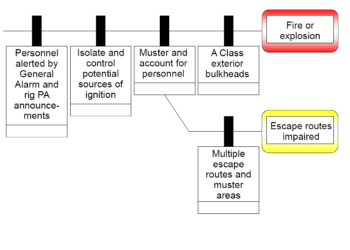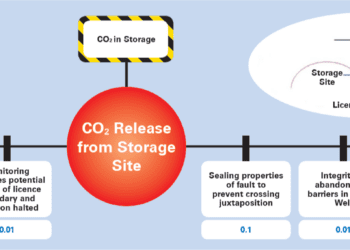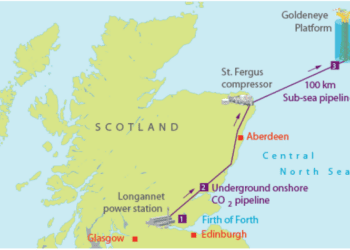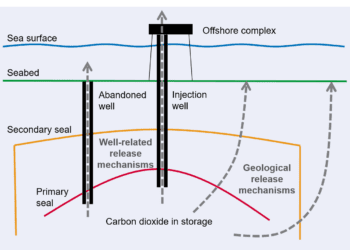Innovation versus Regulation
Can creativity and safety co-exist?
Following the tragic loss of the Titan submersible in June 2023, it transpired that its pilot, also the CEO of OceanGate, had argued in 2019 that regulation stifles innovation (Ref. 1). While the causes of the Titan disaster are still under investigation, we ask to what extent is this generally true, and how can regulation adapt to help foster innovation?
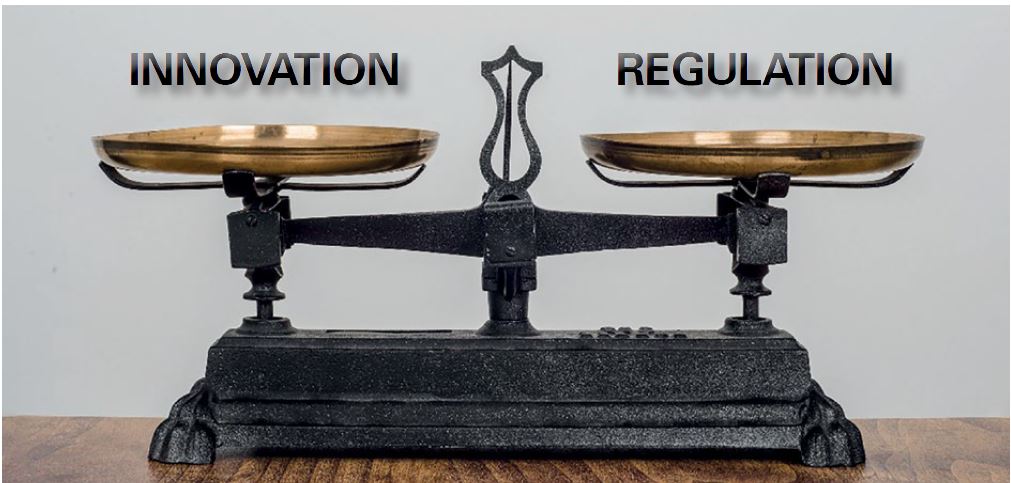
Regulation typically arises in the aftermath of major accidents, or from societal concern, with the nuclear industry a good example of both creation stories. Following the demonstration of the destructive power of the atom bomb against the cities of Hiroshima and Nagasaki in August 1945, the subsequent development of nuclear power for peaceful purposes was, understandably, very strictly controlled. In the US, this initially prevented the development of commercial reactors for power generation (Ref. 2). However, once this early reticence was overcome in the ‘nuclear power race’ of the cold war era, the US Atomic Energy Commission (AEC) was tasked with both promoting and regulating the nascent civil nuclear industry.
REGULATION VS INNOVATION
Interestingly, while it was recognised that an accident could set back the industry by many years, amongst AEC officials there was a common fear of too much regulation, as articulated by Commissioner Libby in 1955: “Our great hazard is that this great benefit to mankind will be killed aborning by unnecessary regulation.” Perhaps as a result and certainly because of the rapidly developing nature of the technology, regulation was not overly prescriptive and licence applications were considered on the merits of bespoke safety assessment on a case-by-case basis.
Responding in part to criticism that the AEC’s dual responsibility for promoting and regulating nuclear power was like “letting the fox guard the henhouse”, in 1975 it was split in two, with regulation coming under the independent Nuclear Regulatory Commission (NRC). Any notion that this reorganisation was too heavy handed was dispelled with the occurrence of the Three Mile Island accident in 1979, which saw a partial core meltdown from an unforeseen combination of equipment and human failures. Subsequent regulatory changes included more stringent requirements relating to operator training, control room design, the use of simulators, review of operational experience of peer plants, and emergency planning and preparedness.
Today, the NRC regulates every aspect of reactor design, assessment and operation, and is regarded as highly prescriptive in its approach. This is proving challenging for the licensing of new technologies, to the extent that NRC has recently proposed an alternative risk-informed, goal-based regulatory framework which aims to be ‘technology-inclusive’ (Ref. 3).
In the UK, it was the Windscale core fire in 1957 that prompted the establishment of a new regulator, now known as the Office for Nuclear Regulation (ONR). Although the ONR generally takes a more goal-based approach to regulation, the expectation for safety features to be of ‘proven design’ and to use ‘proven materials’ (Ref. 4) often means that it is preferable to adopt existing codes and standards and design solutions.
The alternative is to undertake extensive and time-consuming R&D to produce the necessary evidence for a high level of confidence, which may be prohibitively expensive or otherwise deter innovation. One example is the selection of reactor vessel material for novel reactors with a high operating temperature (which is desirable from an efficiency point of view). If a designer is limited to steels that are codified by the American Society of Mechanical Engineers (ASME), which provides comprehensive specifications for nuclear applications, they may choose an inherently inferior material with respect to creep behaviour, for instance, compared to potentially superior alternatives that are less well understood or not yet codified.
POWERFUL PEDANTRY
As some readers may already have divined, there is a good reason behind this otherwise apparent pedantry: the three types of risk help with decision making. More specifically, inherent risk is a useful litmus test for deciding whether credit for safety-related control or mitigation measures is warranted at all and can be used to screen out hazards from further assessment, allowing more time to be spent on those that really matter.
Once controls and mitigation measures are applied to those hazards that remain, their residual risk allows them to be ranked and prioritised for further consideration by ALARP assessment – i.e. answering the question, what improvement is reasonably practicable, given the level of overall risk? And in judging the merit of available options, one factor will be the risk benefit, which is described by the improved risk (or rather the reduction in risk characterised by the difference between the improved risk and the residual risk of the hazard in question).
A MATTER OF TIMING
Regulation is also being shaped by custom and practice, the timing of innovation and the nature of the hazard with respect to the potential number of simultaneous fatalities, all of which shape societal attitude to risk.
An interesting thought experiment is to ask the question: If motor cars had not yet been invented, would they (and roads) be permitted in their current form? In the UK, the Health and Safety Executive (HSE) expects hazards to the general public from work-related facilities or activities to cause no greater than one death in 10,000 per year (the limit of tolerability), with an aim of less than 1 death in a million per year (Ref. 5). In comparison, road traffic accidents in 2022 caused 1,695 fatalities (Ref. 6) which, averaged over a population of 67 million (Ref. 7), equates to 1 death in 39,500 per year. For some individuals (e.g. long distance commuters or pedestrians living near busy roads), their risk will be much higher than the average and may well approach the limit of tolerability (noting, however, that HSE’s enforcement responsibility in this respect does not extend to the public highway). Recognising that cars are controlled manually and preventing accidents largely depends on the driver alone, a safety engineer (and regulator) might well conclude that if we were to apply the ALARP principle, we would be obliged to consider what more could be done to reduce risk (over and above existing safety features such as speed limits, seat belts, air bags, ABS brakes, and crumple zones).
Perhaps because of our long-held love of the motor car and the typically singular nature of casualties, this hazard generally falls into a societal blind spot, compared to, say, the hazard of nuclear power, which on paper at least is over an order of magnitude safer. More generally, it appears that the safety bar for new technology will always be higher than if it were pre-existing.
INNOVATION WITH REGULATION
So far, we may conclude that regulation certainly has the capacity to stifle innovation – through overbearingly prescriptive rules, which may penalise or preclude novel solutions; or if safety-related R&D is prohibitively costly or time-consuming.
Flipping this on its head, this means that while there is no such thing as a free lunch, achieving innovation safely and cost-effectively should be possible if regulation is goal-based (so far as is possible); and if R&D programmes integrate safety assurance requirements from the start (rather than adding safety R&D as a bolt-on at the tail end). Another possibility is to back-up innovative safety features with those that are tried-and-tested, as happens with modern nuclear reactor designs where the software-driven shutdown mechanism is backed up by a separate, diverse hard-wired system.
Whilst it goes without saying that operators and designers (and their supply chain) need to be open minded to the safety benefits of innovation in the first place, regulators can also foster innovation pro-actively. For instance, in 2021, the UK’s ONR appointed a Head of Innovation, responsible for helping to promote, develop and test the application of new technologies and processes in a ‘safe space’ – so called ‘regulatory sandboxing’.
A recently completed pilot involved regulators and industry and explored the use of Artificial Intelligence through the lens of two diverse applications: a robotically operated glovebox, and in supporting structural integrity claims (Ref. 8). In this way, regulators are informed about the state-of-the-art and can develop their regulatory thinking. The output, in turn, gives industry useful intelligence on regulatory concerns and acceptable approaches for safety justification – all of which breaks down barriers to innovation.

CONCLUSION
Embracing innovation while assuring safety is evidently possible with the right mindset. For operators and designers, this means baking safety thinking into development and testing, so that the evidence needed is produced incrementally and cost-effectively. For regulators it means recognising the potential safety benefits of innovation, adapting regulation (preferably goal-based) and pro-actively engaging with industry to ‘sandbox’ regulatory approaches.
This article first appeared in RISKworld Issue 44
References
- Smithsonian Magazine, A Deep Dive Into the Plans to Take Tourists to the ‘Titanic’, Innovation June 2019
- Walker, J. S. & Wellcock, T. R., A short history of nuclear regulation, 1946-2009, US NRC, October 2010.
- NRC, Rulemaking and Guidance for Advanced Reactors
- ONR, Safety Assessment Principles for Nuclear Facilities, 2014 Edition, Revision 1 (January 2020).
- HSE, Reducing Risks, Protecting People: HSE’s decision-making process, 2001.
- Department for Transport, Reported road casualties Great Britain, provisional results: 2022
- Office for National Statistics, Population estimates for the UK etc: mid-2021
- ONR, End-of-project dissemination event for AI regulatory sandboxing pilot



